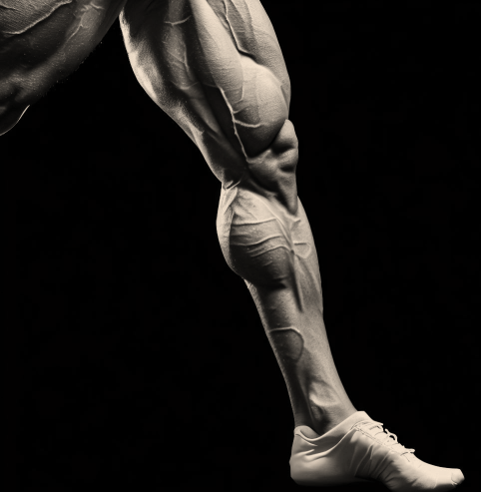Ever taken a moment to marvel at the simple act of walking, running, or jumping? These actions that we often take for granted are made possible due to the harmonious work of various muscles, bones, and tendons in our legs. At the heart of many of these movements lies the Achilles tendon. Let’s delve deeper into its role.
- A Brief Overview of the Achilles Tendon
- Anatomy and Structure
- Functionality and Biomechanics
- Injuries and Their Implications
- Significance in Athletic Performance
- Maintaining Tendon Health
- The Evolutionary Perspective
- Comparing with Other Animals
- The Role of the Achilles Tendon in Leg Movement in Different Ages
- The Impact of Modern Lifestyle
- Frequently Asked Questions
- Conclusion
A Brief Overview of the Achilles Tendon
The Achilles tendon is the largest and most powerful tendon in the human body. Originating from the calf muscles and attaching to the heel bone, it plays a vital role in enabling a range of leg movements.
Anatomy and Structure
- Composition and Flexibility: Comprised of collagen fibers, it’s both tough and flexible, making it ideal for bearing our body weight.
- Connection to Muscles: The tendon attaches the gastrocnemius and soleus muscles to the heel bone, acting as a bridge for transmitting force.
Functionality and Biomechanics
- Role in Walking and Running: The Achilles tendon assists in the push-off phase of walking and running. Without it, propulsion forward would be a challenge.
- Absorbing Force: Acting like a spring, it absorbs and returns energy, making movements like jumping efficient.
Injuries and Their Implications
Achilles tendon injuries can severely hinder our mobility. From simple strains to complete ruptures, the repercussions can be long-lasting.
- Causes: Overuse, not warming up, and sudden increases in activity can lead to injuries.
- Treatment: Depending on the severity, treatments range from physiotherapy to surgery.
Significance in Athletic Performance
Ever wonder why athletes pay so much attention to their Achilles tendon?
- Speed and Agility: It plays a pivotal role in sprints and quick direction changes.
- Endurance: A healthy Achilles ensures sustained performance over extended periods.
Maintaining Tendon Health
Healthy habits can ensure the longevity and strength of the Achilles tendon.
- Regular Exercise: Engaging in exercises that strengthen the calf muscles can indirectly fortify the tendon.
- Stretching: Regular stretching can improve flexibility and reduce injury risk.
The Evolutionary Perspective
The Achilles tendon has played a role in our evolution, influencing how we’ve moved over millennia.
- Bipedalism: Our transition from all fours to two feet was assisted by the Achilles.
- Endurance Hunting: Early humans could hunt over long distances partly because of the efficiency provided by the Achilles tendon.
Comparing with Other Animals
Our Achilles tendon is unique, but how does it stack up against animals?
- Humans vs. Apes: Unlike us, most apes have a shorter Achilles, affecting their walking style.
- Cheetahs and Speed: Cheetahs, the fastest land animals, have an Achilles tendon that contributes to their impressive speed.
The Role of the Achilles Tendon in Leg Movement in Different Ages
From infants to the elderly, the function and health of the Achilles tendon undergo changes.
- Childhood: It plays a role in learning to walk.
- Elderly: Age can bring about reduced flexibility and increased injury risk.
The Impact of Modern Lifestyle
Modern lifestyles can both help and hinder Achilles tendon health.
- Sedentary Lifestyle: Lack of movement can lead to a weaker tendon.
- High Heels and Footwear: The shoes we wear can impact the tendon’s health and functionality.
Frequently Asked Questions
- What is the main function of the Achilles tendon in leg movement?
The Achilles tendon primarily aids in pushing off during walking and running, allowing for forward propulsion. - How can I keep my Achilles tendon healthy?
Engage in regular exercise, especially calf-strengthening activities, and ensure you stretch frequently. Proper footwear also plays a crucial role. - Why is the Achilles tendon so vulnerable to injury?
Its location and the immense force it often endures make it susceptible. Moreover, it has a limited blood supply, which hampers rapid healing. - Can I still walk with an Achilles tendon injury?
It depends on the severity. Mild strains might allow some mobility, but complete ruptures often necessitate immobilization. - How long does it take for Achilles injuries to heal?
Recovery times vary. Minor injuries might heal in weeks, but severe cases, especially those requiring surgery, can take months. - Is surgery the only option for an Achilles tendon rupture?
Not always. While surgery is a common approach, some cases might be treated with immobilization and physiotherapy.
Conclusion
The Achilles tendon, while just one component of our complex musculoskeletal system, plays a monumental role in our daily life, athletic endeavors, and evolutionary history. By understanding its significance and taking steps to maintain its health, we can ensure smooth, efficient leg movement throughout our lives.
For a deeper understanding of the intricacies of leg muscles and their functions, explore our comprehensive articles in the anatomy category.
